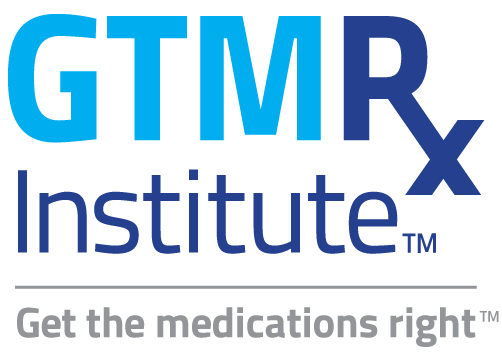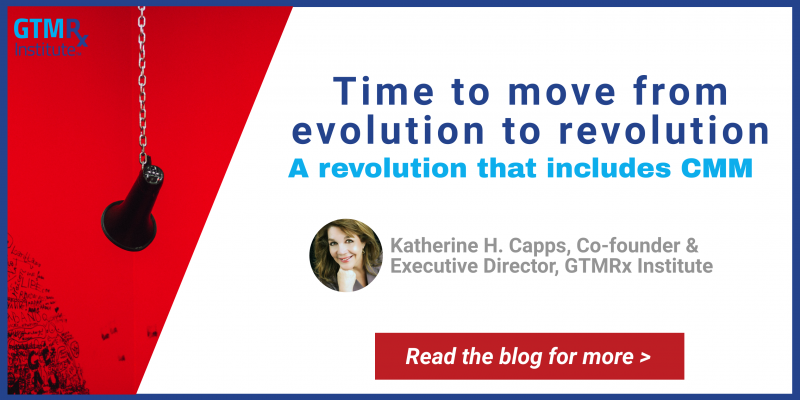 By: Katherine H. Capps
By: Katherine H. Capps
Executive Director
GTMRx Institute
September 8, 2021
CMMI: Time to move from evolution to revolution—a revolution that includes Comprehensive Medication Management (CMM)
The Center for Medicare and Medicaid Innovation (CMMI) works to test and implement payment models that can support improved patient care and cost savings for the Medicare program, and as we know from recent headlines, it’s undergoing fundamental changes.
We believe CMMI will play a central role as we continue to work together to develop payment models that allow greater access to team-based care and services that will optimize medication use while ensuring these services are financially viable and sustainable. Our goal, of course, is to convince CMMI to officially incorporate payment for comprehensive medication management services into Medicare.
A CMMI Primer
CMMI’s mission is to test alternative payment models that—ideally—reduce costs and/or improve quality. A model is considered successful in one of three scenarios:
- Quality improves; cost neutral
- Quality neutral; cost reduced
- Quality improves; cost reduced
Over the last few months, CMS and CMMI leaders began to explore how the Innovation Center was creating “meaningful change to make the health system better for all people.” Those explorations led to some changes, including reducing the number of CMS payment models and increasing the focus on health equity. Significantly for our purposes, CMS plans to prioritize coordinated, team-based care.
At a recent GTMRx Executive Roundtable, CMMI Deputy Director Amy Bassano discussed with the group the role of CMMI and a few of the new models. Among them:
- Primary Care First which allows practices, that are ready, to accept increased financial risk in exchange for flexibility and potential rewards based on performance—including support for practices serving high-needs populations. Primary Care First began earlier this year, but it’s important to note that CMMI has been focused on primary care since its launch a decade ago.
- Direct Contracting, launched in April 2021, which focuses on reductions in the total cost of care. It offers new forms of capitated population-based payments (PBPs), enhanced payment options, and flexibilities to increase the tools available for providers to meet beneficiaries’ medical and nonmedical needs. This model focuses on critically ill populations and uses a team-based approach to manage their care.
- Community Health Access and Rural Transformation (CHART) Model, which will test whether aligned financial incentives, operational and regulatory flexibilities, and robust technical support will help rural providers transform care on a broad scale. Under the Community Transformation track, communities receive upfront funding, financial flexibilities through predictable capitated payments, and operational flexibilities through benefit enhancements and beneficiary engagement incentives. Under the ACO track, rural ACOs receive advance shared savings payments to participate in the Medicare Shared Savings Program. It has yet to launch.
A time of transition
CMMI is on the cusp of change. Over the past several weeks and months, it’s put several models on hold and has discussed the potential blending and weaving of models together. Under the leadership of Elizabeth Fowler, PhD, JD, it has already announced numerous priorities, aligning different payers on value-based care efforts and strengthening the primary care infrastructure.
We’re already seeing some changes: Early model testing at the CMS Innovation Center supported enhanced and integrated care with minimal financial risk. Newer models include higher standards in quality reporting, more opportunities for shared savings and integration of clinical treatment and social services.
One important issue came up in our discussion. CMMI has renewed its commitment to putting patients first. That can be as simple as ensuring patients understand which models they are in. It involves rethinking how care is delivered—in the clinic, remotely or in the home. We believe CMMI is committed to making the journey to value more patient-centered and focused care.
But it can no longer be incremental.
Transform and demand investment
We also need a greater focus on team-based care, which, as Allan Goroll, MD, of Harvard and Mass General pointed out at the Executive Roundtable, requires new net investment.
CMMI has made little new net investment, especially in terms of primary care. And as a result, we’ve seen little change. To have a true team expands the number of people who are part of that care delivery system. And we have a payment system that basically just pays individuals and has nothing to do with team-based care. This includes investments to get the medications right and incorporation of clinical pharmacists on to the team.
We’re not going to get there with evolutionary change. We need a revolution. CMMI needs to be a force for change moving forward.
What about CMM?
CMMI officials have told us their vision aligns with ours. And yes, we’ve seen an increased focus on medication therapy management, including the enhanced MTM model. And that’s a positive: We heartily endorse collaboration between plan sponsors, pharmacists and primary care physicians, especially when such work is supported by advanced technology.
But it’s not CMM. And that matters. We must focus on payment to support comprehensive medication management services in Part B as distinct from enhanced medication therapy management in part D.
CMMI can be a force for change in how we deliver and pay for services that optimize medication use. While Medicare Part D MTM services may have been a start many years ago, they are not the long-term solution. We need to continue to educate CMMI. We must keep making the case for including comprehensive medication management services as the solution for better care, lower costs, higher physician satisfaction, higher patient satisfaction and better outcomes.
We are eager to see what emerges in the coming months, and we look forward to working with CMMI to identify opportunities to improve patient access to team-based comprehensive medication management. I welcome you to join our movement.
This blog is a follow-up to the GTMRx Executive Roundtable on June 24, 2021.


